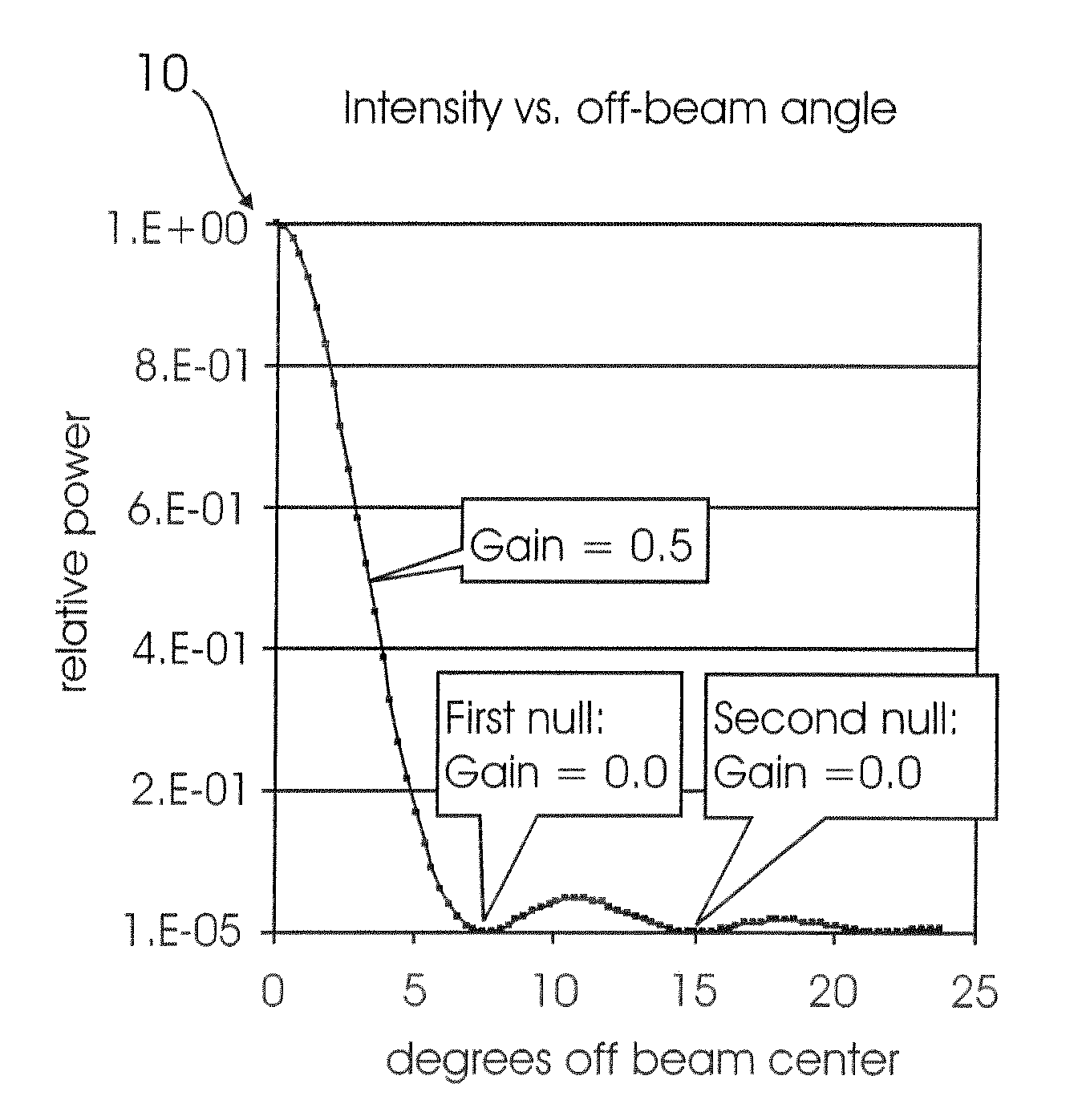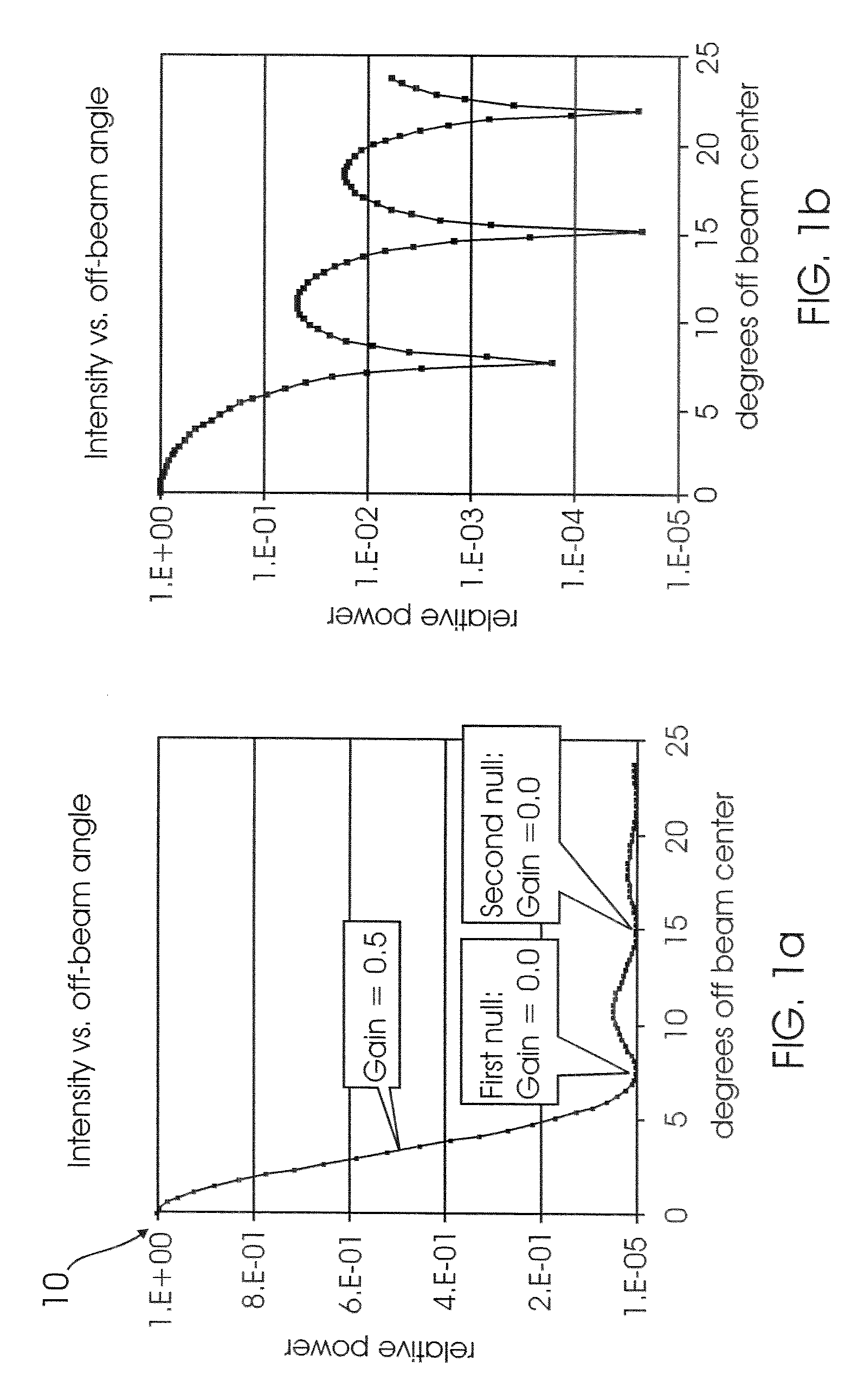Method for pointing high-gain antennas to reduce interference in mobile networks
a high-gain antenna and mobile network technology, applied in the field of communication systems, can solve the problems of not being able to adapt to dynamic systems, requiring and consuming bandwidth, and slow response to the dynamics of highly mobile transmitters and receivers, so as to reduce interference and minimize interference
- Summary
- Abstract
- Description
- Claims
- Application Information
AI Technical Summary
Benefits of technology
Problems solved by technology
Method used
Image
Examples
Embodiment Construction
[0030]As used herein, the designations “node A” and “node B” refer to nodes in the process of establishing a link, for example, an antenna (node A) to an aircraft (node B). The designations “node C” and “node D” refer to two nodes other than nodes A and B in communication with a node designated “node E”, and are capable of linking with node E, but not necessarily with node A or with node B. From the standpoint of node A and node B in a network, there may be zero, one, or a plurality of nodes C, nodes D, and nodes E. In addition, there may be zero, one, or a plurality of nodes E for any particular node C or node D, as any particular node C or node D may be in communication with zero, on e. or more other nodes.
[0031]A mobile network includes a plurality of nodes at which a high-grain antenna may be pointed, such as target nodes, and at least one stationary node. Target nodes include, but are not limited to aircraft, spacecraft, a satellite in geostationary orbit or a surface vehicle; ...
PUM
 Login to View More
Login to View More Abstract
Description
Claims
Application Information
 Login to View More
Login to View More - R&D
- Intellectual Property
- Life Sciences
- Materials
- Tech Scout
- Unparalleled Data Quality
- Higher Quality Content
- 60% Fewer Hallucinations
Browse by: Latest US Patents, China's latest patents, Technical Efficacy Thesaurus, Application Domain, Technology Topic, Popular Technical Reports.
© 2025 PatSnap. All rights reserved.Legal|Privacy policy|Modern Slavery Act Transparency Statement|Sitemap|About US| Contact US: help@patsnap.com



